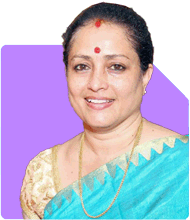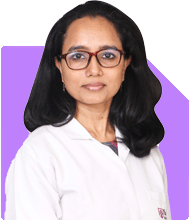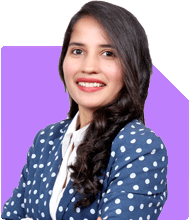Diabetic for 25 years, struggling with high PPBS and fatigue, what can I do?
Dr Karthiyayini Mahadevan | Answer |Ask -Follow
General Physician - Answered on Jun 27, 2024
She specialises in general medicine, child development and senior citizen care.
A graduate from Madurai Medical College, she has DNB training in paediatrics and a postgraduate degree in developmental neurology.
She has trained in Tai chi, eurythmy, Bothmer gymnastics, spacial dynamics and yoga.
She works with children with development difficulties at Sparrc Institute and is the head of wellness for senior citizens at Columbia Pacific Communities.... more

I am a diabetic since last 25 yrs presently taking glyxambi25/5, amaryl 2,and glucobay 50 1 tab each before breakfast, glucobay 50 before lunch and Metsmall 1gm sr after dinner but my ppbs is not under control its around 200-220 since some months today my glucometer reading is fbs 85,ppbs 193 . I always feel extremely fatigue and dizzy. My age is 69.i walk total 90 mts/day ( after breakfast,post lunch, evening and post dinner) more less maintain a diabetic diet. My Hba1c is 7.2 pls help to control my ppbs
You must be having insulin deficiency
Please your insulin levels for PP problems
You may like to see similar questions and answers below
Dr Hemalata Arora | Answer |Ask -Follow
General Physician - Answered on May 29, 2023
Dr Karthiyayini Mahadevan | Answer |Ask -Follow
General Physician - Answered on Jun 08, 2023
Shreya Shah | Answer |Ask -Follow
Nutritionist, Diabetes Educator - Answered on Apr 12, 2024
Ramalingam Kalirajan |10893 Answers |Ask -Follow
Mutual Funds, Financial Planning Expert - Answered on Dec 15, 2025
Ramalingam Kalirajan |10893 Answers |Ask -Follow
Mutual Funds, Financial Planning Expert - Answered on Dec 15, 2025
Radheshyam Zanwar |6746 Answers |Ask -Follow
MHT-CET, IIT-JEE, NEET-UG Expert - Answered on Dec 15, 2025
Ramalingam Kalirajan |10893 Answers |Ask -Follow
Mutual Funds, Financial Planning Expert - Answered on Dec 15, 2025
Ramalingam Kalirajan |10893 Answers |Ask -Follow
Mutual Funds, Financial Planning Expert - Answered on Dec 15, 2025
Ramalingam Kalirajan |10893 Answers |Ask -Follow
Mutual Funds, Financial Planning Expert - Answered on Dec 15, 2025
Samraat Jadhav |2508 Answers |Ask -Follow
Stock Market Expert - Answered on Dec 15, 2025
Ramalingam Kalirajan |10893 Answers |Ask -Follow
Mutual Funds, Financial Planning Expert - Answered on Dec 15, 2025
Reetika Sharma |425 Answers |Ask -Follow
Financial Planner, MF and Insurance Expert - Answered on Dec 15, 2025
Radheshyam Zanwar |6746 Answers |Ask -Follow
MHT-CET, IIT-JEE, NEET-UG Expert - Answered on Dec 15, 2025


























